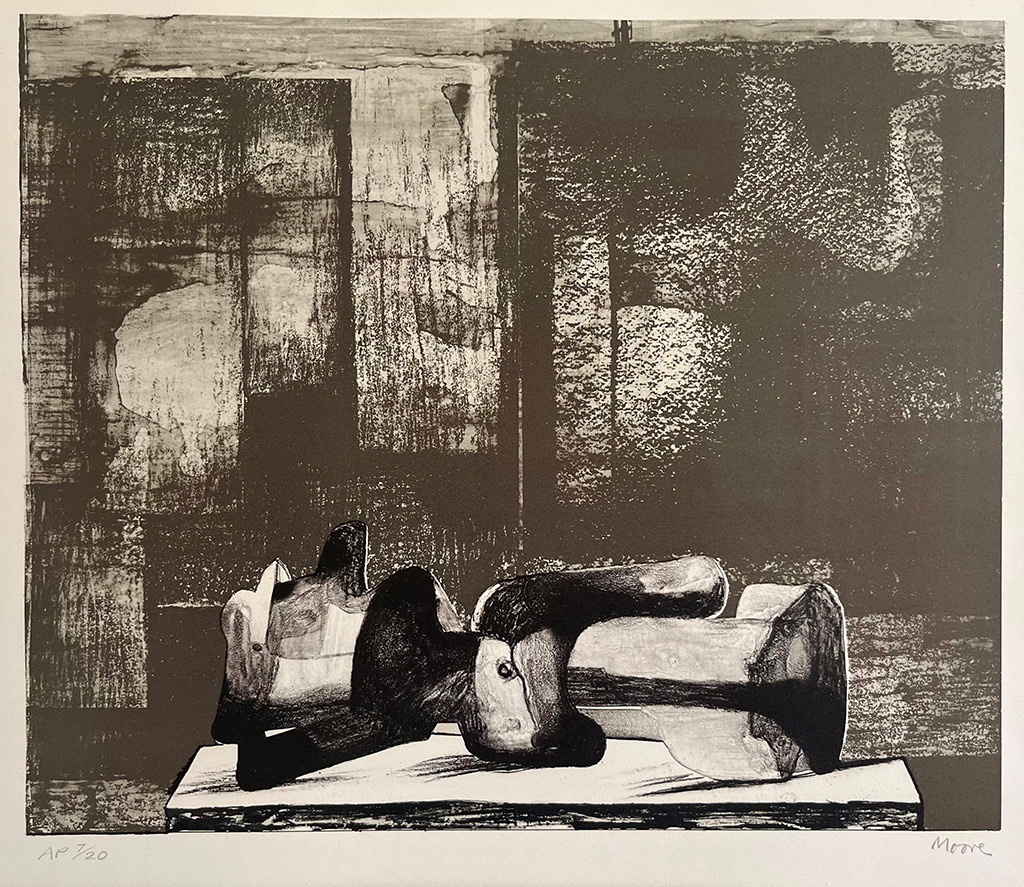Henry Moore
Henry Moore OM CH FBA (1898-1986) was an English artist best known for his semi abstract, large scale sculptures, many of which are situated in public spaces. He achieved celebrity status during his lifetime and was one of the most important sculptors of the twentieth century.
He grew up in Castleford, Yorkshire. His father worked in a coal mine. He initially trained as a teacher before going to fight in the First World War. Moore graduated from Leeds College of Art in 1919 which was where he met Barbara Hepworth, who remained a friend and they would work together at various times. He also studied at the Royal College of Art.
Read more
During the Second World War Moore took a break from his sculptural work as he was recruited as an official war artist of Britain. He created many drawings of people using the London underground as bomb shelters during the blitz.
In the late 1920s he lived and worked in Hammersmith. At his first solo show in 1928, among those to buy his work was the artist Jacob Epstein. During the early 1930s the influence of Barbara Hepworth could be seen in his work as Moore started to make abstract holes in his sculptures, in which he experimented with the juxtaposition positive and negative space. During this decade he taught at Chelsea School of Art. Moore was commissioned to create Reclining Figure for the centre of the Festival of Britain in 1951, celebrating Britain’s recovery after the War. His Post War sculptures were made at his home and studio in Perry Green in Hertfordshire. This eventually became the site for the foundation he established. He founded the Henry Moore Foundation in 1977, a charitable trust to promote art.
His sculptures became increasingly more abstract and larger scale later in his life. Lesser known than his monumental bronzes are the plaster sculptures which he created as part of the process leading to the final bronzes. His prints relate to the organic forms and figures in his sculptures.
His inspirations came from natural forms and shapes within the landscape. Much of his figurative work explores ways of linking the human form to the landscape. The setting of the sculpture was important for Moore to consider in the relation of the piece to the surrounding landscape. A recurring theme in his figure sculptures feature a mother and child. He was influenced by Primitive art as well as movements such as Constructivism and Surrealism. The ‘Chacmool’ figures of Aztec art were a particularly important inspiration for Moore’s Reclining Figure series.
Contact Wendy J Levy Fine Art
If you are interested in an artist / piece of art and would like to know more or secure it, please complete this quick form and we will be back to you as soon as possible. Alternatively, call 07773 121 574 for an even more immediate response.

